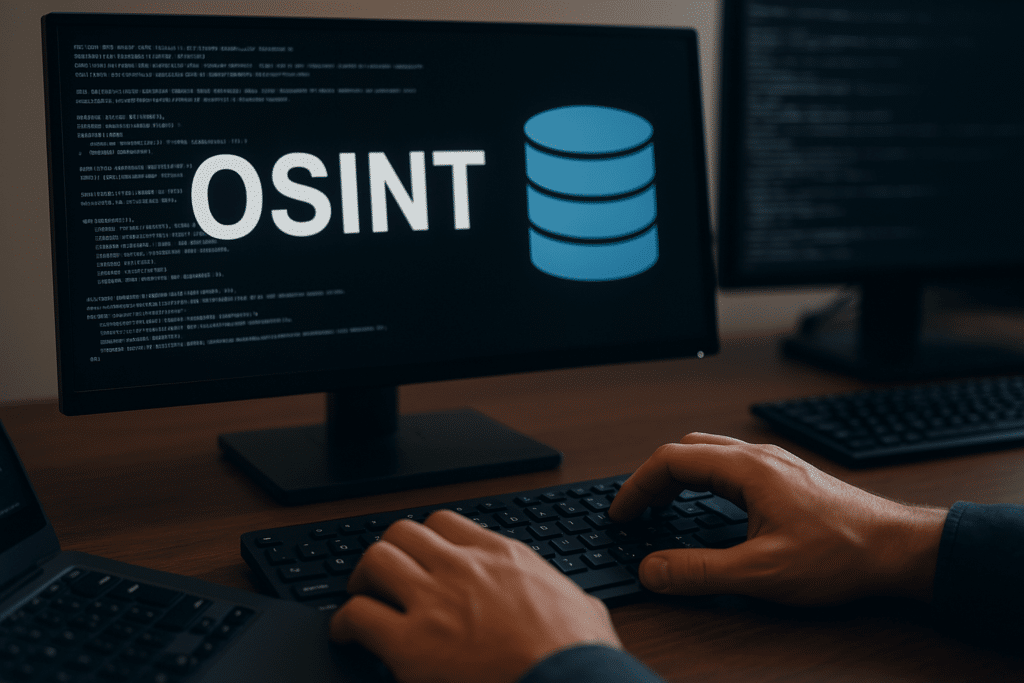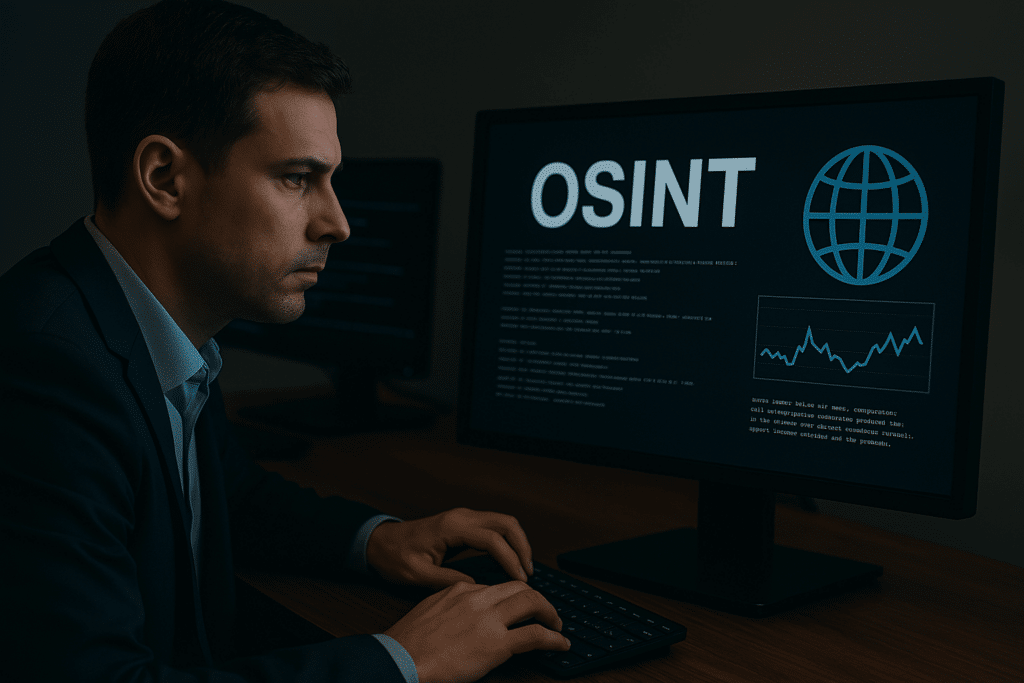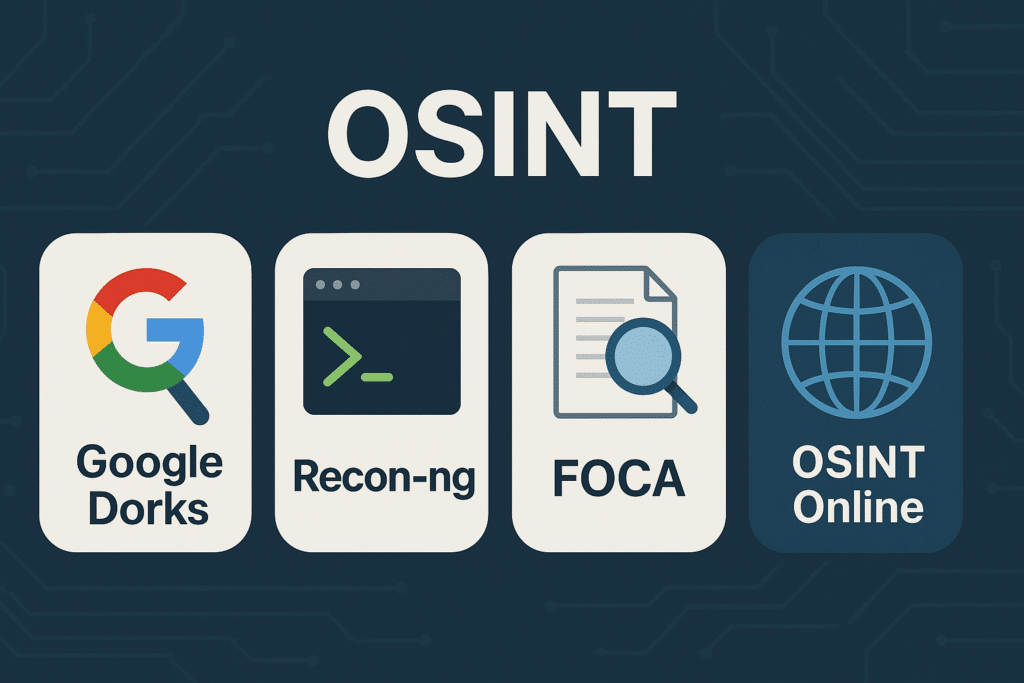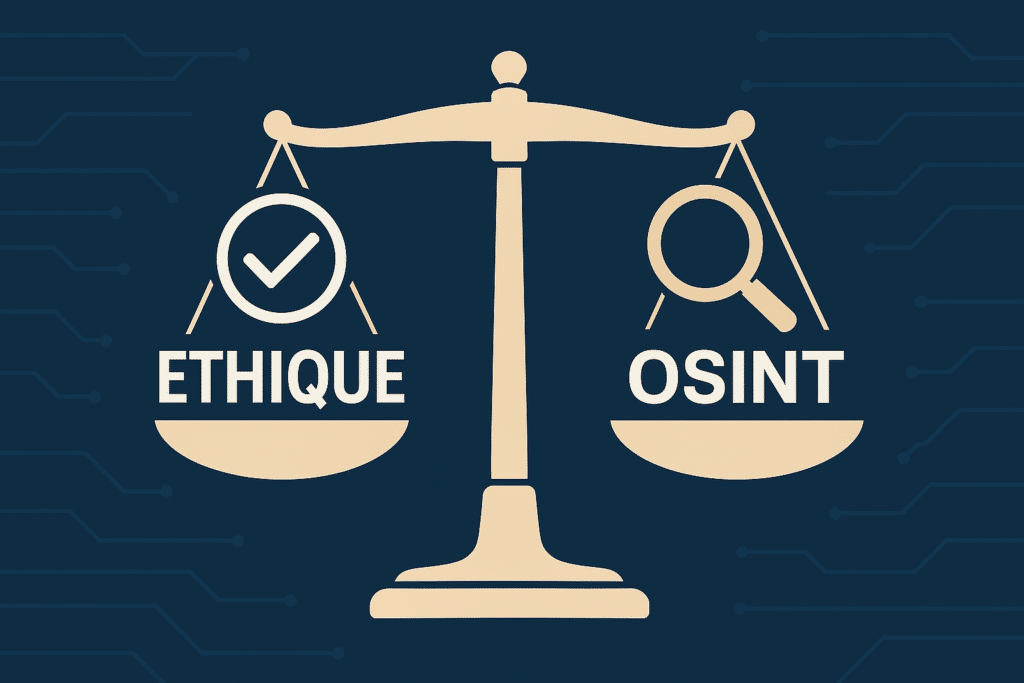OSINT, or open source intelligence, is revolutionizing the norms of cybersecurity. By utilizing publicly accessible information, it allows for threat anticipation, conducting investigations, and protecting organizations without breaking the law. Discover how OSINT operates, what tools to use, and why this discipline is becoming indispensable in cybersecurity professions.
What is OSINT?
Définition de l’Open Source Intelligence
OSINT, or Open Source Intelligence, refers to the collection and analysis of public information. This encompasses social media, websites, forums, and even publicly accessible databases.
Traditionally, this approach can be traced back to military intelligence services, which already exploited media to detect weak signals. Today, in the digital era, anyone can engage in it.
OSINT is one of the most insightful and ethical ways to access an abundance of information without ever breaching the law.
OSINT vs. Traditional Intelligence: How do they differ?
Traditional intelligence relies on confidential, sometimes intrusive, or even unlawful methods. In contrast, OSINT is restricted to what is visibly accessible.
This distinction is what makes OSINT so potent. It involves remaining lawful while utilizing often underestimated data. However, diligence is crucial: not everything is necessarily trustworthy, even if it is public.
Is OSINT legal?
Absolutely. As long as it involves data accessible without hacking, we remain within the legal framework. This includes, of course, the GDPR in Europe, which protects personal data.
However, legality isn’t always sufficient. We believe it is essential to adopt an ethical approach: if data is sensitive, even if publicly available, is it truly worth exploiting?

What is the use of OSINT today?
OSINT in Cybersecurity
In cybersecurity, OSINT is a formidable ally. It enables identifying visible vulnerabilities, analyzing information mistakenly exposed (such as emails or open ports), and mapping threats before they materialize.
We regard it as an essential strategy in any defense plan: proactive, lawful, and often underestimated.
OSINT in People Search Investigations
Are you trying to find someone, verify an identity, or cross-reference information? OSINT can assist you by utilizing digital traces left voluntarily (or not) on the web.
In this context, every detail matters: an email address, a username, a photo… If you know where to search, you can often trace back the connection.
OSINT for Companies and Institutions
Organizations can greatly benefit from integrating OSINT into their strategic monitoring. It allows them to:
- monitor their e-reputation,
- detect weak signals related to competitors,
- prevent social engineering attacks.
OSINT and Hacking: Misusing Public Data
Sadly, hackers also utilize OSINT. They use it to customize attacks, identify susceptible targets, or craft more believable scams.
Therefore, it is vital, both for individuals and companies, to control the information they expose. In essence, knowing more about OSINT also means better protecting oneself from it.
How does an OSINT approach work?
Passive OSINT vs. Active OSINT
Before beginning, it’s useful to distinguish between two main approaches. Passive OSINT entails collecting information without engaging with the target. In other words, you observe, you investigate, but without leaving a trace. It’s ideal for remaining discreet.
Conversely, Active OSINT involves direct action: sending a message, signing up on a site, asking questions undercover… It’s riskier but sometimes necessary for deeper insight.
We recommend prioritizing the passive approach when feasible. It is legal, ethical, and often adequately effective.
| Criterion | Passive OSINT | Active OSINT |
|---|---|---|
| Interaction | None, observation is discreet | Direct interaction with target (messages, actions) |
| Risk Level | Low, as it is non-intrusive | Higher, may be detected |
| Typical Usage | Initial research, discreet monitoring | In-depth investigation, targeted access |
| Legality | Fully legal | Legal if ethical boundaries are respected |
| Examples | Browsing public profiles, Google Dorks | Creating fake profiles, direct exchanges |
| Recommendation | Prefer by default | Use with caution |

Typical Steps of an OSINT Investigation
To help you visualize the process better, here are the major steps of a typical OSINT approach:
- Define a clear objective: What exactly are we seeking?
- List potential sources of information.
- Collect data using appropriate tools such as a Data Warehouse.
- Analyze, cross-reference, sort to verify consistency.
- Produce a concise report that is clear and actionable.
It may seem simple, but a good OSINT investigation requires methodology, curiosity, and discernment.
What Data Can Be Exploited?
Different types of data are exploited depending on the context, but generally, the focus is on:
- Public social profiles (LinkedIn, Facebook…),
- Domain names or email addresses,
- PDF documents indexed by Google,
- Photos, metadata, site histories,
- or even technical data (IP, ports, DNS…).
Everything public is potentially exploitable, provided you know where to search.
The Three Characteristics of OSINT Data
To be genuinely useful, OSINT data must be accessible and freely available without hacking. It is also critical to ensure its reliability and verify that it comes from a credible source and is directly related to our objective, ensuring its relevance. If a piece of information does not meet these three criteria, it is better to be cautious.
What are the Best OSINT Tools?
Essential Tools: Shodan, Maltego, SpiderFoot, theHarvester…
These names might be unfamiliar, but they are among the pillars of OSINT:
| Tool | Main Function |
|---|---|
| Shodan | Explores connected devices (servers, cameras, IoT) accessible on the web |
| Maltego | Visualizes relationships between people, companies, domain names, IP addresses |
| SpiderFoot | Automates data collection from numerous OSINT sources |
| theHarvester | Retrieves emails, domain names, subdomains, and public IP addresses |
Focus on OSINT Framework
If you’re a beginner, utilizing a framework is crucial, and the OSINT Framework is a valuable ally. It is a free platform that aggregates hundreds of tools categorized by usage: social networks, emails, technical data, etc.
This site ensures we don’t miss anything and always select the most appropriate tool for our objective.
The Best Free OSINT Tools
Here’s some good news: you don’t need to pay to start.
- Google Dorks: advanced and highly precise Google searches.
- Recon-ng: a comprehensive command-line framework.
- FOCA / Metagoofil: to extract metadata from documents.
With these tools, you can do a lot without spending a dime.

OSINT Online: Reference Platforms and Sites
Here are some online sources used daily:
- Have I Been Pwned: to check if an email address has been compromised.
- Wayback Machine: to view previous versions of websites.
- Hunter.io: to find email addresses associated with a domain.
- Whois / DNSlytics: to retrieve technical information about a site.
These platforms are both powerful, reliable, and easy to use. If you are starting, begin with these.
How do you train in OSINT?
Key Skills to Become an OSINT Expert
To become a genuine OSINT expert, you need to develop a combination of technical and analytical skills. It is crucial to know how to search for information in the right places, operate collection tools with precision, and above all, interpret data with insight and discernment. Curiosity, rigor, and patience are your best allies in this profession. You will also need to understand the basics of cybersecurity, become familiar with some scripts or command lines, and adopt an investigative mindset. The more you can cross-reference data, the more relevant your analyses will be.
Working in OSINT: What Career Opportunities?
Currently, career opportunities in OSINT are numerous and diverse. You can join a company as an analyst, work in a monitoring team within a public organization, or even engage in ad-hoc missions to identify threats, detect leaks, or better understand a brand’s competitive landscape. There is also an increasing demand in the fields of investigative journalism, national security, and privacy protection. In summary, if you enjoy observing, connecting, and comprehending, OSINT is a rich and stimulating field.
Training with DataScientest: A Program Tailored to Cyber Challenges
At DataScientest, you can pursue cybersecurity training. Our programs are designed for those wanting to acquire practical skills useful from the first assignments. The learning process is progressive, incorporating real cases, tools used in the industry, and personalized educational support. You will also benefit from a structured framework, where each concept is contextualized in scenarios close to the professional world. If you seek comprehensive, rigorous, and market-relevant training, it’s an excellent starting point.
OSINT: A Strategic Tool for Cybersecurity Professions
Digital Sovereignty Issues
In a world where information circulates swiftly, mastering OSINT becomes a matter of sovereignty. States, businesses, and even local authorities must monitor what is being said, shared, and potentially weaken them. By systematically collecting public data, you help enhance the resilience of organizations, prevent crises, and inform decision-making. In this context, OSINT becomes a sometimes overlooked but remarkably effective digital self-defense tool.
The Ethical and Legal Challenges of Open Source Intelligence
OSINT should not become an excuse for exploiting everything. Although information is public, it is not always free of rights. You must respect the legal framework, especially data protection regulations like the GDPR. Beyond the law, there is also an ethical dimension. Should data be used if it can harm privacy, even indirectly? In our view, practicing OSINT also means being responsible and knowing when to stop. This professionalism differentiates a good analyst from a mere curious individual.

Conclusion
OSINT is now a cornerstone of modern cybersecurity. Accessible, potent, and legal, it converts public data into strategic action levers. Yet, its power is as much in the tools as in the human capacity: the ability to search, cross-reference, understand, and above all, decide what should — or should not — be used.










